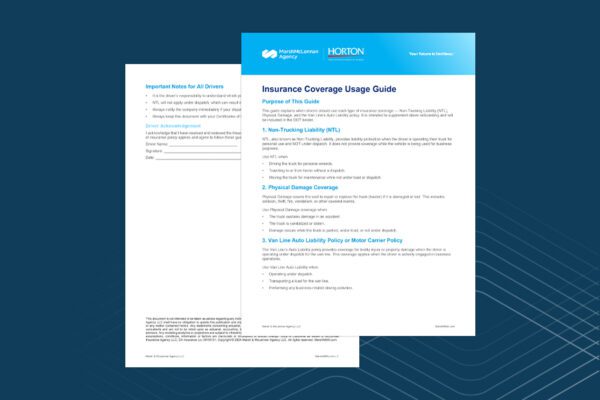As the country transitions from Trump to Biden’s administration, employers want to know what OSHA will look and act like under the new administration. Because Joe Biden was Vice President in the Obama administration, the agency should look and act much as it did from 2008 through 2016. Here are some specific points to pay attention to as we near this transition.
Assistant Secretary of Labor for OSHA:
The Assistant Secretary of Labor – OSHA is an appointed position and was never filled during the Trump administration because the Senate failed to initiate the confirmation of President Trump’s appointee, Scott Mungo. Senate democrats preferred candidates with a background in organized labor. While some OSHA policies were eliminated or muted during the Trump administration, our safety consulting practice did not notice a significant reduction in the number of inspections or the aggressiveness with which inspections were conducted.
David Michaels led OSHA through seven years of the Obama Administration and oversaw many policies and enforcement changes during his tenure as the longest-serving head of the agency. Because control of the Senate has not yet been determined, it is unknown how quickly presidential appointments, including the head of OSHA, will move through the Senate. With Democratic control and possible elimination of the filibuster, appointees could move swiftly through the nomination process. If this happens, changes in agency policy will likely occur much more quickly in the Biden administration.
Emergency COVID-19 Standard:
Democrats have called for the promulgation of a COVID-19 standard for workplaces. Michigan, Virginia, Oregon, and California (all state OSHA programs) developed their own emergency COVID-19 safety standards. Currently, OSHA enforcement of COVID-19 related hazards in the workplace relies on specific standards, such as the personal protective equipment (PPE) standard or the occasional application of OSHA’s general duty clause.
Despite the fact a vaccine has been approved, and additional vaccines are in the process of being approved, the Biden administration believes a COVID-19 standard is necessary because it may take five or six months to vaccinate enough Americans to stop the spread. As the standard will include specific actions employers must take to comply, it is anticipated many more citations and penalties will be issued to employers who fail to implement programs designed to protect employees from COVID-19. It is possible that regulators may already be drafting a standard using elements in the state COVID-19 workplace safety standards.
COVID-Related Inspections:
Federal and state OSHA programs have received about 60,000 COVID-19 related complaints since the pandemic. Inspections were opened and initiated for about 6,000 of these complaints. Absent a COVID-19 specific safety and health standard, inspectors are using existing regulations, including personal protective equipment (PPE) and respiratory protection standards, to issue citations for violations. Promulgating a detailed, emergency COVID-19 standard will provide inspectors with the ability to issue many more citations for specific program deficiencies.
With or without an OSHA emergency COVID-19 standard, employers must address the potential spread of COVID-19 in the workplace by developing and implementing exposure control plans. Such plans include provisions for screening, distancing, testing, PPE, training and contact tracing. Employers will be better positioned to survive an inspection by implementing a COVID-19 exposure control plan until a more comprehensive standard is developed. Our safety consulting team has assisted a large number of employers to develop and implement such plans.
“Regulation by Shaming”:
During his time in the Obama/Biden administration, David Michaels implemented a policy named “regulation by shaming.” According to Michaels, “the most effective means for OSHA to encourage the elimination of life-threatening hazards is to publicize the names of violators, especially when their actions place the safety and health of workers in danger.” Michaels explained that OSHA “will issue more hard-hitting press releases that explain more clearly why they cited a specific employer.”
Our consulting group was involved in a case involving the public shaming of a privately-owned business in Wisconsin. An unfortunate series of events resulted in OSHA inspections of several of their facilities. Penalties exceeded $100,000 and resulted in harshly worded press releases claiming the employer “didn’t care about the health and safety of its employees.” Working with attorneys, we negotiated wording changes to the press release as part of the settlement agreement.
It’s expected a Biden administration will likely reinstate its “regulation by shaming” policy to shame employers into compliance. Such public shaming can result in reputational damage, and in some cases, the loss of business with customers that terminate relationships to protect their own reputations.
Increase the Number of OSHA Compliance Officers:
Currently, federal OSHA employs approximately 770 field compliance officers. In 2010, the agency employed more than 1,000. This represents the number of federal compliance officers and does not include the 22 federally-approved state OSHA enforcement programs, and six states enforce protections for state and local government workers.
During the presidential campaign, Biden called for Trump to double the number of federal OSHA inspectors and aggressively enforce job safety and health regulations. Ultimately, OSHA’s budget will determine how many new federal compliance officers are hired, but based on his comments, it appears as though many more inspectors will be hired. It can take at least a year to train new compliance officers, so it may take some time before a significant increase in enforcement occurs.
Restore the Entire OSHA Electronic Recordkeeping Rule:
During the Obama administration, the OSHA recordkeeping standard was revised to require employers with more than 20 employees to report injuries and illnesses to a centralized database maintained by OSHA. The rule required employers with more than 250 employees to include detail from the OSHA 300 log itself, excluding the names of the injured workers. Additionally, the rule made all of this information available to the public.
The rule also discouraged employers from engaging in safety incentive programs that reward the absence of injury and post-accident drug testing programs. The agency claimed such programs discourage the timely reporting of injuries and illnesses. Employers were particularly outraged at the prospect of being found in violation of the standard through mandatory, post-injury drug testing. Some employers considered suspending post-injury drug testing protocols to avoid the risk of non-compliance.
The Trump administration pared this rule back by eliminating the requirement to submit OSHA 300 log details, preventing the electronic information from being publicly accessible, and softening its approach on enforcement of post-injury drug testing and safety incentive programs. It’s anticipated a Biden administration could restore all of the provisions in the original standard. This will make it much more difficult to require post-accident drug and alcohol testing without supervisors and others’ extensive training. If restored, it will also make injury and illness data for all affected employers publicly accessible.
Site-Specific Targeting:
In October of 2018, OSHA announced the return of the site-specific targeting program. Based on the data required to be submitted to OSHA through the electronic recordkeeping rule, OSHA targets “high injury rate establishments” for inspection. Rather than conducting random inspections of employers, OSHA targets employers with high injury incident rates assuming there must be hazards or defects in the safety program responsible for the injuries. Expect a Biden administration to continue the site-specific targeted inspections.
By doubling the number of OSHA compliance officers, site-specific targeting inspections could increase significantly. Employers should pay close attention to OSHA logs and report only those injuries and illnesses that must be recorded on the log. Also, employers subject to electronic recordkeeping should file their reports by the March 2 deadline. A Biden administration is much more likely to inspect and penalize employers who fail to file the required information electronically.
Bringing It All Together
Historically, Democratic administrations focus on the promulgation of new safety and health standards, while Republican administrations tend to enforce existing standards and regulations. Biden’s administration is likely to promulgate new regulations while also drastically stepping up enforcement of existing standards.
Employers should closely examine their safety and OSHA compliance programs in the weeks and months ahead. Effective safety programs can help prevent accidents and injuries that drive the injury incident rates that may prompt inspection through site-specific targeting. Compliance audits can help identify OSHA compliance deficiencies that can be corrected before an inspection.
For more than 29 years, Horton Safety Consultants has helped employers develop and implement effective safety and compliance programs that prevent injuries and protect from costly OSHA inspections, an exceptional service offered exclusively to our valued clients. Please contact us if you would like assistance with your safety and OSHA compliance programs.
Material posted on this website is for informational purposes only and does not constitute a legal opinion or medical advice. Contact your legal representative or medical professional for information specific to your legal or medical needs.


